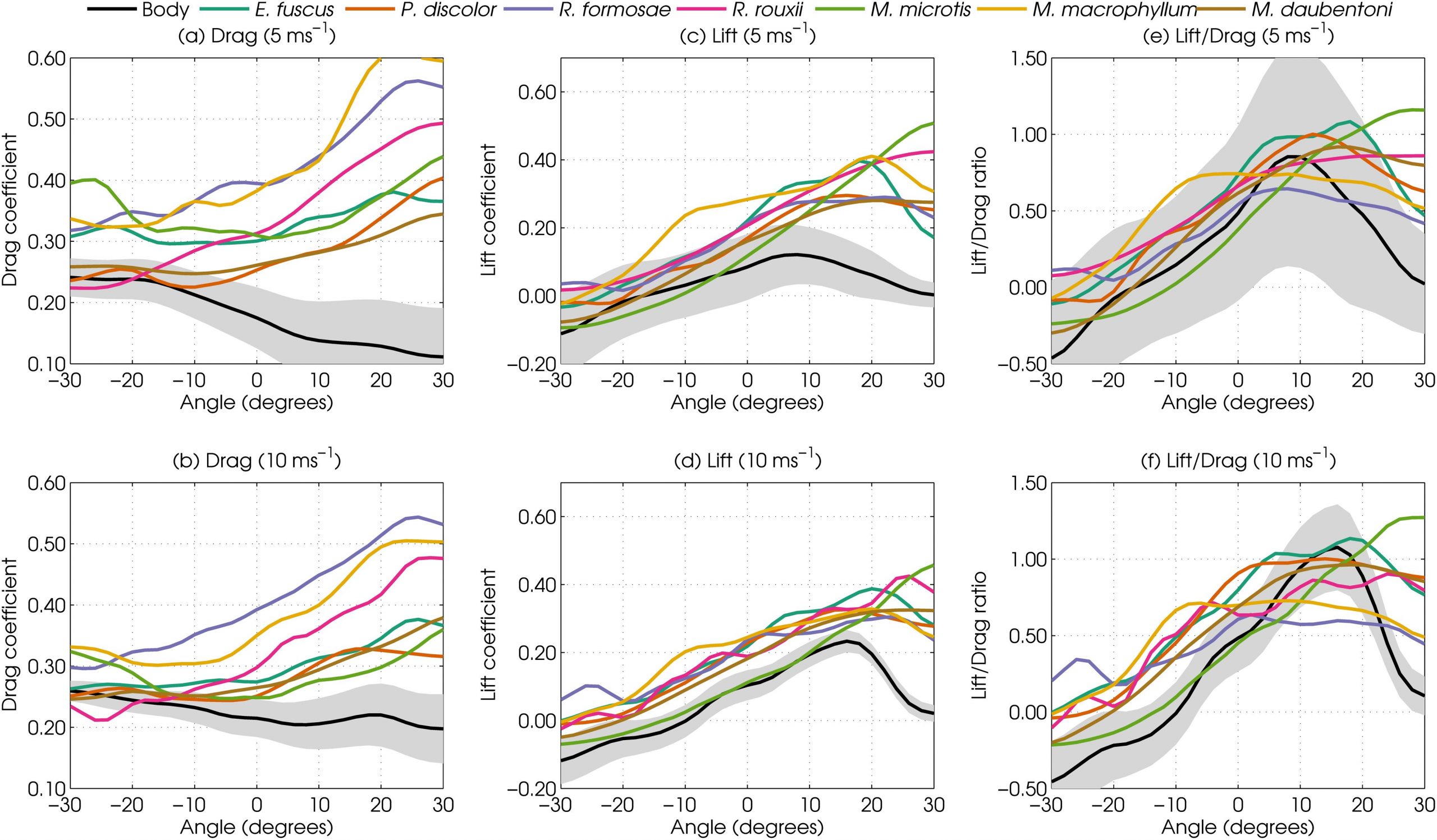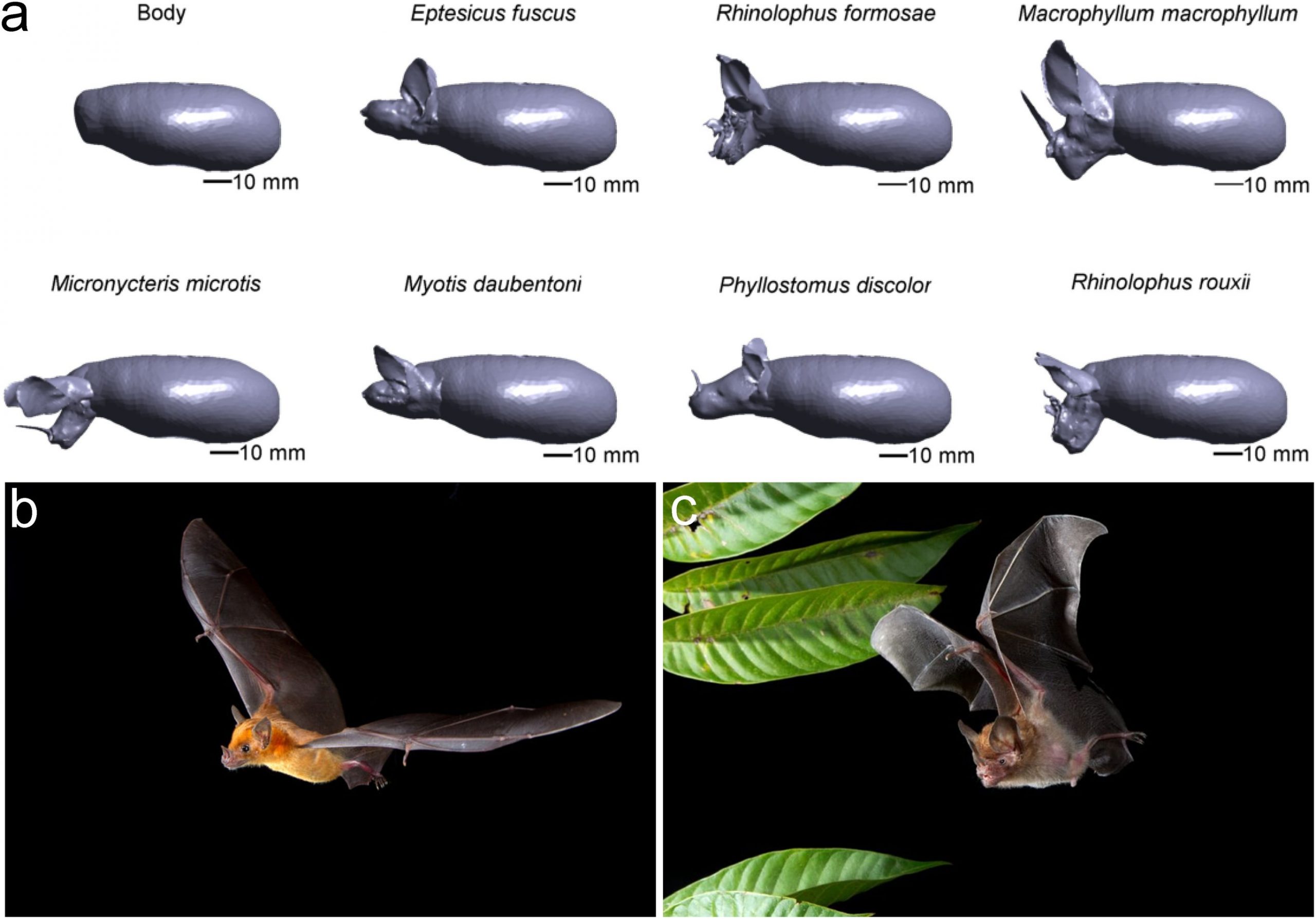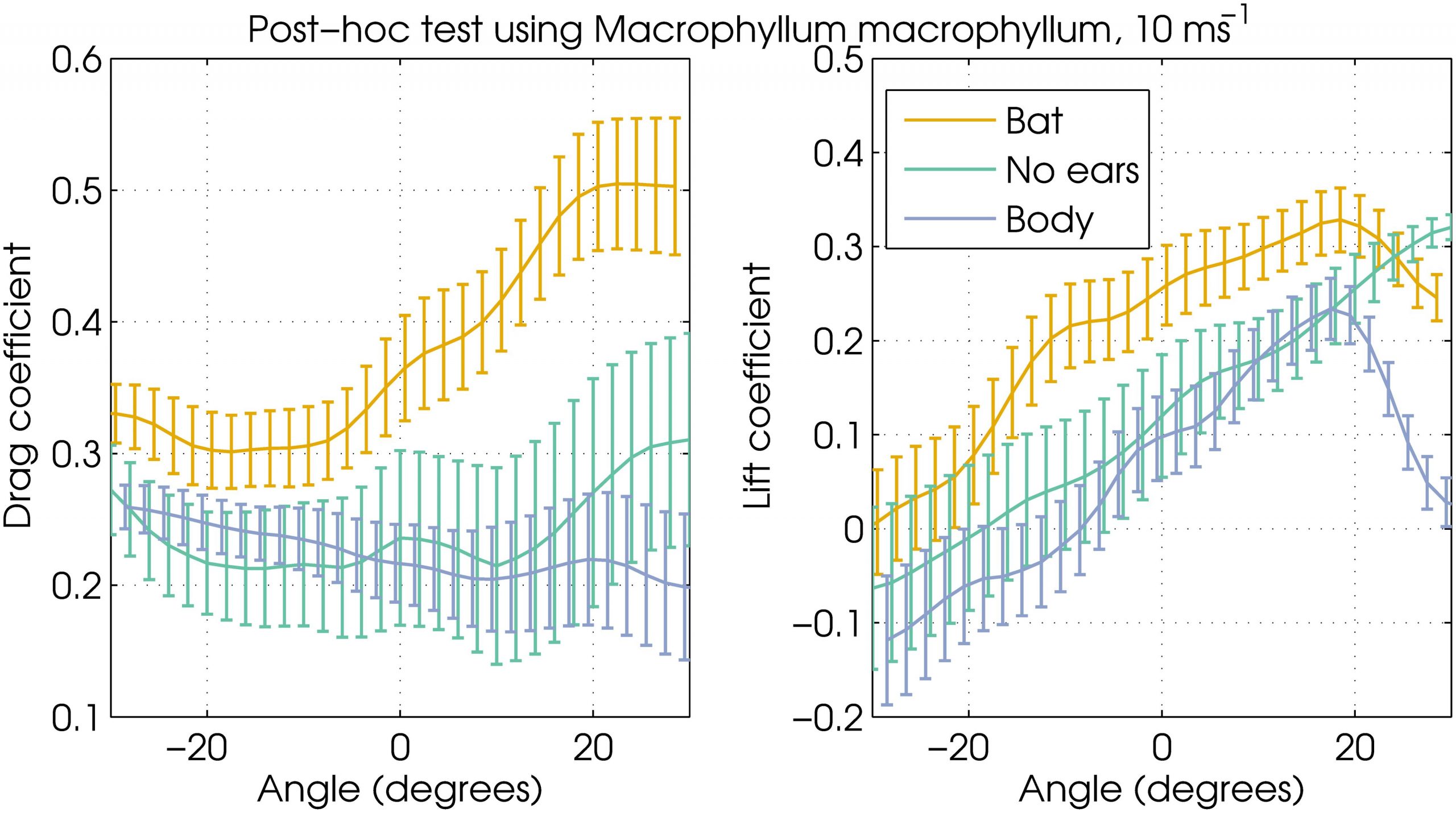Flight of the Bats: Exploring Head Shape and Aerodynamics
It’s a bird…it’s a plane…it’s a bat! All three may be soaring through the sky, but their shapes vary greatly, which affects their aerodynamics during flight. Birds typically have streamlined head profiles that strongly contrast with the appendages featured on echolocating bats. For example, birds do not rely as bats do on external pinnae, the visible part of the ear outside the head, to localize sound during echolocation, or the use of sound waves to locate objects in space. Some bat species also have a large noseleaf, or nose ornament, which allows them to vocalize through their nostrils and direct the echolocation call. While pinnae and noseleaves allow a bat to perform echolocation for hunting and foraging, they are often large in comparison to the bat’s body, and this could potentially slow the bats down by creating a large amount of drag, or resistance, as the bat flies.
To better understand how the structure of a bat’s head might affect its ability to fly, the authors of this PLOS ONE study tested seven different bat species with varying head shapes, including a bat species with a noseleaf, an appendage which hadn’t been tested previously.
The researchers conducted micro-computerized tomography scans (CT scans) on previously deceased bat heads collected from labs, and then 3D-printed models of the heads. They then created a standardized bat body profile for these models based off of photos of different species of bats in flight, such as the pale spear-nosed bat and the hairy big-eared bat flight poses shown in B and C in the image above. As there were no high-quality flight images available for the common big-eared bat, the authors used images of the hairy big-eared bat, a close relative, to approximate its head posture.
Each of the bat models were placed in a wind tunnel for aerodynamics testing. The models were tested at angles of attack, or the angles a bat flies toward its prey, between −30° and +30°, at air speeds of 5 m/s and 10 m/s, to measure factors such as drag and lift. The graphs below show that while the bat heads generate a large amount of both lift and drag, the lift-to-drag ratio is high for all bat species. This means that the bats experience slightly more lift than drag, and since an increased lift-to-drag ratio helps aid in flight, the authors suggest that the bats’ head shapes may not be hindering their flight as much as previously thought.

The authors conducted additional testing with the long-legged bat model, to determine whether a bat possessing both pinnae and a noseleaf would also experience more lift than drag in the wind tunnel. The graphs below show that the bat model with pinnae and noseleaf attached experiences high lift and drag, and when these are removed, those forces mostly decrease.
Since the bat pinnae generate more lift than drag in most cases, the authors suggest that the shape and features on the bats’ heads do not produce a heavy aerodynamic cost, but may actually aid their flight.
While these researchers aren’t the first to suggest that pinnae may also create lift, they expand on this result with more detailed models of a range of bat species, with different pinnae lengths, and by including a species that has a noseleaf. Furthermore, since the researchers tested bat species from a wide variety of ecological niches, or the ways in which the bats function within the ecosystem, their findings may be more easily generalized across the bat taxa than previous research.
While the authors acknowledge that there are limitations to testing static models for bat aerodynamics, their results suggest that pinnae and noseleaves may not affect bat aerodynamic capability as was previously thought. Looks like the shape of the bats’ faces might not slow down their nighttime flight after all!
Citation: Vanderelst D, Peremans H, Razak NA, Verstraelen E, Dimitriadis G (2015) The Aerodynamic Cost of Head Morphology in Bats: Maybe Not as Bad as It Seems. PLoS ONE 10(3): e0118545. doi:10.1371/journal.pone.0118545
Gardiner J, Dimitriadis G, Sellers W, Codd J (2009) The aerodynamics of big ears in the brown long eared bat plecotus auritus. Acta Chiropterologica 10: 313–321. doi: 10.3161/150811008X414881
Images: Image 1: Bernard Dupont on Flickr, Images 2, 3 and 4: Figures 1, 2 and 4 from published article.



